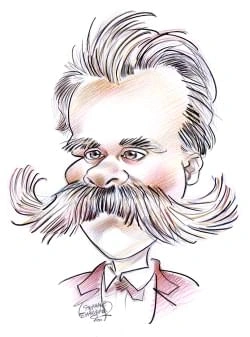217 résultats pour "varieties"
-
impression, techniques d' - informatique.
À la différence de l'impression offset, où les éléments imprimants et non imprimants sont sur le même plan, les procédés d'impression en relief sont fondés sur une différence de niveau : l'encre est appliquée sur les parties saillantes de la surface d'impression, avant d'être transférée par pression sur le papier ou sur tout autre support. À l'heure actuelle, on utilise deux méthodes d'impression en relief : la typographie et la flexographie. Ces deux méthodes se distinguent par la nature de leu...
-
psychothérapie - Mécedine.
D’autres disciples de Freud s’opposent à lui sur des points importants de la théorie et de la technique thérapeutique et fondent leurs propres écoles. 5.1 Jung Une école influente est celle du psychiatre suisse Carl Gustav Jung, pour lequel Freud a exagéré l’importance des instincts sexuels en tant que moteur du comportement ;l’individu doit aussi réaliser ses potentiels non sexuels, sous peine de névrose. Jung élabore la psychothérapie analytique, qui tient compte du caractère de l’individu(in...
-
Dictionnaire en ligne:
DURÉE, substantif féminin.
conscience, 1889, page 104. — Expressions diverses. a) Durée concrète. Car notre durée n'est pas un instant qui remplace un instant : il n'y aurait alors jamais que du présent, pas de prolongement du passé dans l'actuel, pas d'évolution, pas de durée concrète. La durée est le progrès continu du passé qui ronge l'avenir et qui gonfle en avançant ( HENRI BERGSON, L'Évolution créatrice, 1907, page 4 ). b) Durée pure. La durée toute pure est la forme que prend la succession de nos états de conscienc...
- Wheat - biology.
-
Amérique du Sud.
2.5 Climat Le climat de l'Amérique du Sud est relativement chaud. Une longue zone climatique humide et tropicale s'étire sur toute la largeur du continent à la hauteur de l'Équateur,se transformant graduellement vers le nord et vers le sud en de larges zones où la durée des saisons pluvieuses et les précipitations diminuent. Ces régions, aux étéshumides et aux hivers secs, sont soumises à des sécheresses prolongées. La sécheresse est un problème particulièrement grave dans le nord-est du Brésil...
-
Afrique.
delta. Le Congo, avec ses 4 400 km, baigne une grande partie de l'Afrique centrale. Il naît en Zambie et coule vers le nord sous le nom de Lualaba. Il oblique vers l'ouest puis versle sud-ouest pour se jeter dans l'océan Atlantique. Le troisième grand fleuve africain, le Niger, en Afrique occidentale, est long d'environ 4 200 km ; son cours supérieur n'est navigable que pendant la saison des pluies. LeNiger, qui prend sa source sur le plateau du Fouta-Djalon, coule vers le nord et l'est en forma...
-
National Parks and Preserves.
Some ibex raised in Italy’s 700 sq km (220 sq mi) Gran Paradiso National Park (1922) were transferred to aid herd restoration elsewhere in the country. Switzerlandreturned lynx to Swiss National Park to keep red deer populations in check. The growth of national parks also enabled many European countries to restore forests thathad given way to industrialization by the early 20th century. Africa’s wildlife was hunted heavily from the late 19th century well into the 20th century. By 1920 big-game h...
-
Alabama (state) - geography.
indentations along the coast are measured, the state’s shoreline is 977 km (607 mi) long. It includes the shores of Mobile Bay, an inlet 56 km (35 mi) long at the mouthof the Mobile River. Barrier beaches partly block the entrance to the bay, leaving narrow openings on either side of Dauphin Island. Dauphin and other islands alongAlabama’s coast west of Mobile Bay are separated from the mainland by Mississippi Sound. D Climate Alabama has a humid subtropical climate, with short, relatively mild...
-
-
Alabama (state) - USA History.
indentations along the coast are measured, the state’s shoreline is 977 km (607 mi) long. It includes the shores of Mobile Bay, an inlet 56 km (35 mi) long at the mouthof the Mobile River. Barrier beaches partly block the entrance to the bay, leaving narrow openings on either side of Dauphin Island. Dauphin and other islands alongAlabama’s coast west of Mobile Bay are separated from the mainland by Mississippi Sound. D Climate Alabama has a humid subtropical climate, with short, relatively mild...
-
North Dakota - geography.
Bismarck, the growing season averages 134 days, as the average date of the last killing frost is May 11 and that of the first killing frost is September 22. The length ofthe growing season drops to about 110 days in the northerly reaches of the state. The long periods of summer sunshine at this latitude, providing as much as 16 hoursof daylight in summer, help crops to mature quickly, thus compensating somewhat for the relatively short growing season. Temperatures in the north are, on the averag...
-
North Dakota - USA History.
Bismarck, the growing season averages 134 days, as the average date of the last killing frost is May 11 and that of the first killing frost is September 22. The length ofthe growing season drops to about 110 days in the northerly reaches of the state. The long periods of summer sunshine at this latitude, providing as much as 16 hoursof daylight in summer, help crops to mature quickly, thus compensating somewhat for the relatively short growing season. Temperatures in the north are, on the averag...
- la division du travail
-
Idaho - geography.
Idaho-Montana state line in the southern part of the Bitterroot Mountains. Consequently, nearly all the rivers in the state drain toward the Pacific. Most of Idaho lieswithin the drainage basin of the Columbia River system. The Snake River, which is the chief river in southern and central Idaho, follows a crescent-shaped course forabout 790 km (about 490 mi) across southern Idaho. It then swings northward along the Idaho state line and joins the Columbia River in Washington. Major tributariesof...
-
Idaho - USA History.
Idaho-Montana state line in the southern part of the Bitterroot Mountains. Consequently, nearly all the rivers in the state drain toward the Pacific. Most of Idaho lieswithin the drainage basin of the Columbia River system. The Snake River, which is the chief river in southern and central Idaho, follows a crescent-shaped course forabout 790 km (about 490 mi) across southern Idaho. It then swings northward along the Idaho state line and joins the Columbia River in Washington. Major tributariesof...
-
Pennsylvania - geography.
B Rivers and Lakes There are three major river basins in Pennsylvania: the Susquehanna, the Ohio, and the Delaware. Together they drain more than 90 percent of Pennsylvania’s landarea. Most of eastern and central Pennsylvania is drained by the Susquehanna and Delaware systems. The western part of the state is drained by the Allegheny andMonongahela rivers, which join at Pittsburgh to form the Ohio. In addition to the three major river basins, short streams flowing into Lake Erie drain the north...
-
Pennsylvania - USA History.
B Rivers and Lakes There are three major river basins in Pennsylvania: the Susquehanna, the Ohio, and the Delaware. Together they drain more than 90 percent of Pennsylvania’s landarea. Most of eastern and central Pennsylvania is drained by the Susquehanna and Delaware systems. The western part of the state is drained by the Allegheny andMonongahela rivers, which join at Pittsburgh to form the Ohio. In addition to the three major river basins, short streams flowing into Lake Erie drain the north...
-
Spain - country.
B Natural Resources Spain has a number of mineral resources. The largest known deposits are of iron ore, zinc, and lead. Spain also produces significant quantities of copper and mercury.These deposits are mined mainly in Huelva province in southwestern Spain, around Cartagena on the Mediterranean, and at various points along the Bay of Biscay inthe north. Additionally, uranium is mined in the region of Extremadura, near the Portuguese frontier, where pyrites, fluorspar, gypsum, tungsten, and po...
}})








